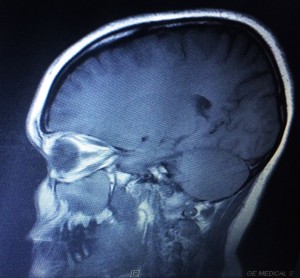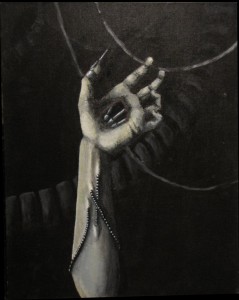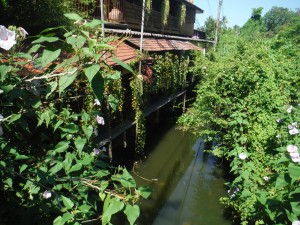A question within the Culture-Nature debate is the idea of what makes us human, what separates us from nature? Some would answer that by addressing our genome, but that is not always sufficient. Our specific traits that combine to present us as human genetically are changeable- they can alter depending on who is looking and what gets artificially added or subtracted. It is difficult to definitively distinguish between culture and nature when we cannot distinguish between human and other, especially as the latter two are blending more and more. The way we interact with our environment changes based on how we classify and perceive ourselves and our bodies, making the interactions of a “cyborg” different than that of a person who refuses any kind of technological appendage, thus keeping a lifestyle they would describe as “organic.” Below are abstracts of academic articles addressing the perception of humans as not entirely human, including changing forms depending on who is looking in Chronically Unstable Bodies, and the incorporation of technology into the body to augment knowledge and ability in A Cyborg Manifesto.
Chronically Unstable Bodies
Aparecida Vilaça’s article Chronically Unstable Bodies: Reflections on Amazon Corporality addresses the idea that humanity is a concept that will be continually defined, and the form the body takes relies on perception. Vilaça uses a case study of the Wari’ people living in Brazilian Amazonia near the Bolivian boarder and discussed their concepts of kwere-, or the body, and jam-, which is defined as soul but can also mean the capacity to jamu, or transform. According to Vilaça, various Wari’ myths “suggest the soul is not a fixed ontological attribute, but a capacity linked to specific relational contexts.” She describes the story of the baskets women used to weave being able to walk, but when one woman saw them she found their bouncing along the path comical and laughed, offending the baskets and causing them to refuse to ever walk on their own again. Her main finding is that everything exists as a perspective for the Wari’, and physical form and appearance depends primarily on the perspective of whomever is looking, and she believes that the fact that nothing is concrete and that everything is a perspective helps to explain the “general lack of interest in the origin of body substances shown by indigenous Amazonians.” Vilaça’s article was well written and clear, though it does take a couple readings to fully comprehend her terminology. Her discussion of the transformation of the corporeal encourages reevaluating how humans define themselves not only on their own but also in relation to their environment.
Looking beyond the “natural” organic world, Donna Harraway’s article about A Cyborg Manifesto explores the idea that humanity is changing into cyborgs and how our social and environmental relations will change. Below I have included the song Robotboy by Robyn to add to the mechanical musings of Harraway.

A Cyborg Manifesto
Donna Haraway writes in her article A Cyborg Manifesto: Science, Technology, and Socialist-Feminism in the Late Twentieth Century that “social reality is lived social relations, our most important political construction.” Her primary focus is on humanity turning into cyborgs, beings that combine animal and technology, existing in both a natural and inorganic world. She brings into her argument the idea of cyborgs in modern medicine without giving examples, instead moving into the idea of the cyborg being “a fiction mapping our social and bodily reality,” a singular compilation of imagination and material reality. Haraway’s article focuses on the potentials and possibilities of cyborgs, claiming them a connection between nature and culture, though her main argument is to see from multiple perspectives about the nature of a cyborg world, as a “single vision produces worse illusions than double vision or many-headed monsters.” Haraway presents a discussion of the perceptions of the body and its relationship to the nature-culture divide. Though her end argument is valid, situations should not be viewed from a single vantage point, her overall style and choice of examples create a flow that is disorienting for the reader. It is clear that she is attempting to put into practice her idea of non-restrictive thinking through her style, but it is difficult to read. Haraway will make a point, then bring in an example that surprises the reader- from the new status of bestiality in a cyborg world to the potential for cyborgs to avert the nuclear apocalypse.

Though the following abstract is not strictly about the transformation of human to other, it does bring in a potent metaphor-namely, that the house is like an extension of the body, resulting in extreme caution from some about what they do and do not let into their homes.
Barriers of the Body
Richard Wilk’s Bottled Water: The Pure Commodity in the Age of Branding discusses the idea of commodifying a free and abundant resource. Wilk’s argument was that though branding had turned water into a consumer good, it has not ended the moral debate about rights and inequality. Water is a popular symbol of the natural world, and when coupled with the image of mountains it presents a pristine image, but Wilk argues that in addition to creating an idea of luxury water, bottled water has become a metaphor for the conquest over nature. He also presents the idea of the house and the home as extensions of the body, and anything that crosses the boundary between the private house and the public world is potentially dangerous and impure. This metaphor is used to explain those that mistrust the government and public water treatment facilities because they are removed from the production of what is coming into their home and have to trust a faceless entity to not poison them. Bottled water is marketed not only as more pristine than tap water, but also as a distinction of wealth, age, and gender. There is little opportunity to visibly reject the privatized water industry- the only real ways are not buying the water and using a reusable water bottle, but according to Wilk, that can be ambiguous and impractical. Choosing between the public water systems and private water means making a choice of who to distrust the least, which Wilk feels will not lead to a satisfactory outcome.
Header Image source: https://www.flickr.com/photos/mikeshaheenphotography/11757990584

